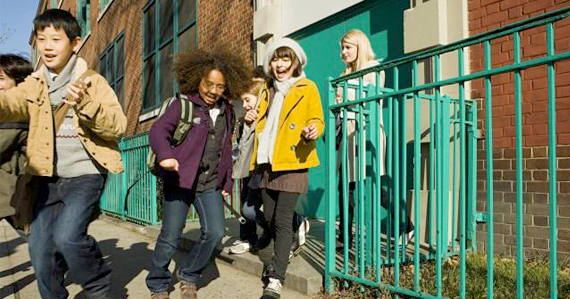From HUD website

Margery Austin Turner, Vice President for Research at The Urban Institute, recently shared insights on the persistence of neighborhood segregation in a presentation at HUD titled “Racial & Ethnic Equity Gaps – How Do the 100 Biggest Metros Compare?” Ms. Turner’s research centers on changes in neighborhood composition between 1980 and today. Though progress has been incremental, more communities are seeing increased diversity. Much of the change can be attributed to an influx of both Asian and Hispanic families into neighborhoods that had previously been either predominantly black or predominantly white; the racial divide that has traditionally separated black and white populations is eroding, albeit slowly.
The Urban Institute looked at a number of characteristics that describe where people live and often determine the opportunities (or lack thereof) that they’re afforded as a result: residential segregation, neighborhood income, school test scores, employment, and homeownership. The Urban Institute developed an interactive mapping tool, “Grading the Top 100 Metros: Racial Equity,” that compares how different metropolitan areas perform for their African American and Latino residents. Available online at http://datatools.metrotrends.org/charts/metrodata/rankMap_files/EquityMap_files/RankMapBlack.cfm the tool allows users to apply various weights to the factors and rank the country’s top 100 metropolitan statistical areas on how well they’re achieving racial equity based on the following parameters:
- Residential Segregation
- Neighborhood Income Gap
- School Test Score Gap
- Employment Gap
- Homeownership Gap
By changing the weighting factors associated with each of these criteria, the user can generate a visual “report card” that maps the Top 100 metros’ performance in terms of achieving racial equity based on whatever parameters are of greatest interest. The resulting map shows the metros graded from A to F with corresponding colored dots representing the best, worst, and those falling somewhere in between. Clicking on a dot calls up specific information for that metro area, and a link allows the user to view or download the data.
“If we care about equity, we need to care about patterns of racial segregation,” Turner observed. She noted that the top scores can be found in small- to medium-sized metros in the South and West; for example, Charleston, SC and El Paso, TX score among the best in terms of overall racial equity. Conversely, the large metros in the Northeast and Midwest did not fare as well; for example, Chicago and New York scored in the bottom tier.
Turner also noted that, when segregation is removed from the scoring and analysis is performed using the remaining four factors — Neighborhood Income Gap, School Test Score Gap, Employment Gap, and Homeownership Gap — most of the ten best areas remained at or near the top. In other words, residential segregation is an important source of inequality in schools, homeownership, and employment. At the bottom of the scale, removing segregation from the scoring again had little effect, with all but one remaining in the “Ten Worst” rankings, and the remainder mostly shifting positions.
Turner believes that residential integration continues to be a worthwhile goal, and opportunities for advancement should be more equitably distributed, regardless of where you live. Though much progress has been made, in many areas, access to good schools and employment opportunities remains very much tied to a person’s zip code. “In 1980, there were a lot of suburban neighborhoods that were almost exclusively white,” Turner noted, “Today, there are almost none.” She added, however, that there’s still tremendous room for improvement, both in terms of investing in distressed neighborhoods where services are often lacking, and in making opportunities for advancement more equitably available, such as through open enrollment policies, charter and magnet schools, and through HUD’s many programs that foster community development and neighborhood revitalization.

No comments:
Post a Comment